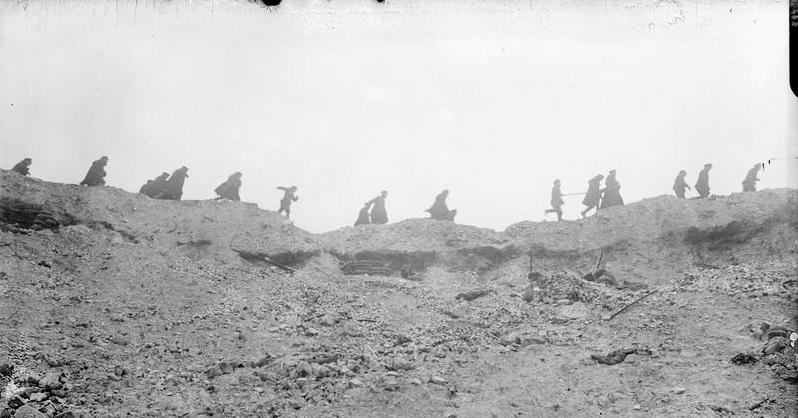Privates William Marmon, 21, and Harry Carter, 20, were killed with six other soldiers when a 15-ton German underground mine exploded on November 22, 1915, in World War I.
The two men from the 10th Battalion the Essex Regiment were most likely on sentry duty in a dugout when the bomb buried it in hundreds of tons of earth.
They were buried in the Commonwealth War Graves Commission’s Albert Communal Cemetery Extension in France with named graves and headstones.
Experts researching the men, though, have discovered that the two men remained buried under the earth where they died in the village of La Boiselle for 100 years.
It appears that the War Office made a clerical error leading to the graves being marked with their names.
The two men will be laid to rest with full military honors three years after their bodies were found.
There will be nine surviving relatives attending the service. Reverend Richard Priest will lead the service which is being organized by the Ministry of Defense’s Joint Casualty and Compassionate Centre (JCCC).
Trevor Newland, 60, is the great-nephew of Marmon. He said he’d known Marmon’s sister but she had never mentioned him.
Brian Churchyard is the great-nephew of Carter. He said that the family had received letters from Carter and that reading them now is poignant.
The remains of the two men were found in 2013 when the La Boisselle Study Group, a professional archaeology group, was excavating trenches in the area referred to as the “Glory Hole.”
The site is two hectares. It includes British, French and German trenches, a field full of mine craters, and what is left of a farm. Underneath it all is a maze of tunnels.
The two men were discovered in a trench outside of the post. They were fully kitted out with rifles, ammunition, grenades and flares.
The archaeologists also found figurines of children and a bullet carved into a heart.
The JCCC examined the evidence collected by the archaeology group. Using genealogy, they were able to find the surviving relatives of all eight of the soldiers killed in the blast.
DNA evidence proved the identity of the remains. The names on the graves have been amended, The Guardian reported.
An average of 40 soldiers were discovered on the former front lines of the western front. As laid out by French law, the CWGC must be involved whenever a body is found.
